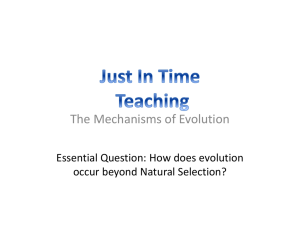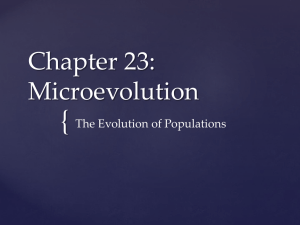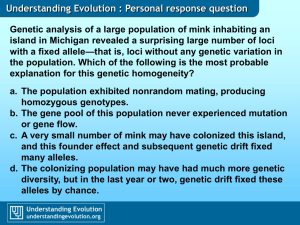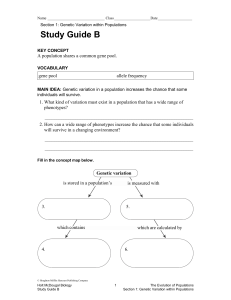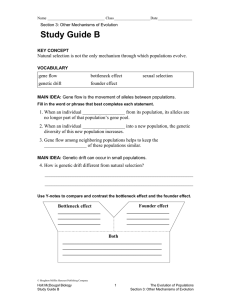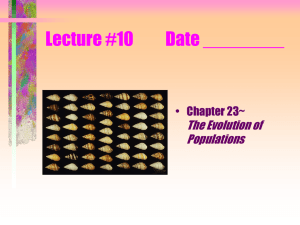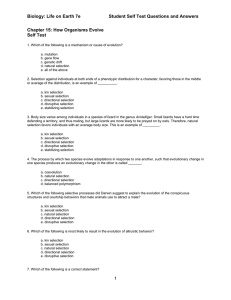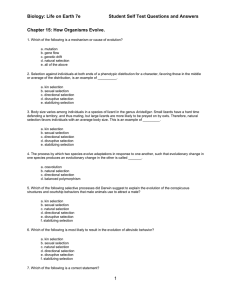Descent with modificaiton
advertisement
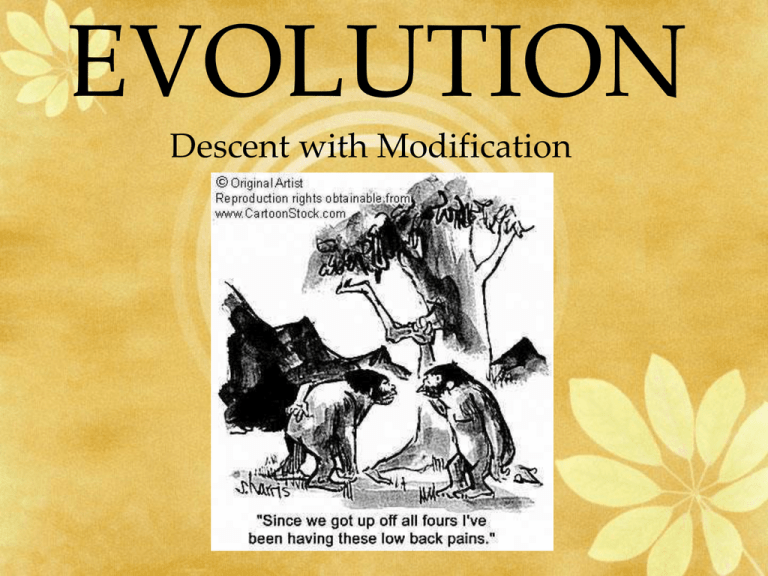
EVOLUTION Descent with Modification How are these pictures examples of Evolution? Biological Evolution Change in the genetic makeup of a population or species over time. We can influence evolution over time through selective breeding. Population A group of individuals belonging to the same SPECIES! Species A group of populations whose individuals have the potential to interbreed and produce fertile offspring. Gene Pool •The total aggregate of genes in a population at any one time. Population Genetics •The study of genetic changes in populations. How are these pictures examples of Biological Evolution? Microevolution •Change that occurs within a species over time; a change in the gene pool of a population over a succession of generations. Mechanisms of Microevolution 1. Genetic Drift: changes in a gene pool of a small population due to chance (usually reducing genetic variability). How does the picture in your lab book explain genetic drift? A. Bottleneck Effect • Type of genetic drift resulting from a reduction in population (natural disaster) such that the surviving population is no longer genetically representative of the original population. B. Founder Effect: •A cause of genetic drift attributable to colonization by a limited number of individuals from a parent population. 2. Gene Flow Genetic exchange due to the migration of fertile individuals or gametes between populations (reduces differences between populations). 3. Mutations •Random changes in the DNA The Attack of the Killer Bee! GO BEHS! 4. Non Random Mating Inbreeding and asortive mating (both shift frequencies of different genotypes). 5. Natural Selection Differential success in reproduction; adapts a population to its environment. Population Variation •Changes within a population. Polymorphism: coexistence of 2 or more distinct forms of individuals within the same population. Geographical variation: differences in genetic structure between populations Sexual Selection Selection towards secondary sex characteristics that leads to sexual dimorphism (separate characteristics). Macroevolution: •Change that occurs among species over time as new species evolve and old species become extinct. The origin of new taxonomic groups. –For example, macroevolution is evolution on the “grand scale” resulting in the origin of higher taxa. –Speciation: the origin of a new species. Convergent Evolution Unrelated organisms inhabiting similar environments will evolve in similar ways resulting in similar morphology. Ex. Hummingbirds and sunbirds Divergent Evolution •Two or more populations or species with common ancestry become more dissimilar in response to evolution in different habitats. adaptive radiation artificial selection

